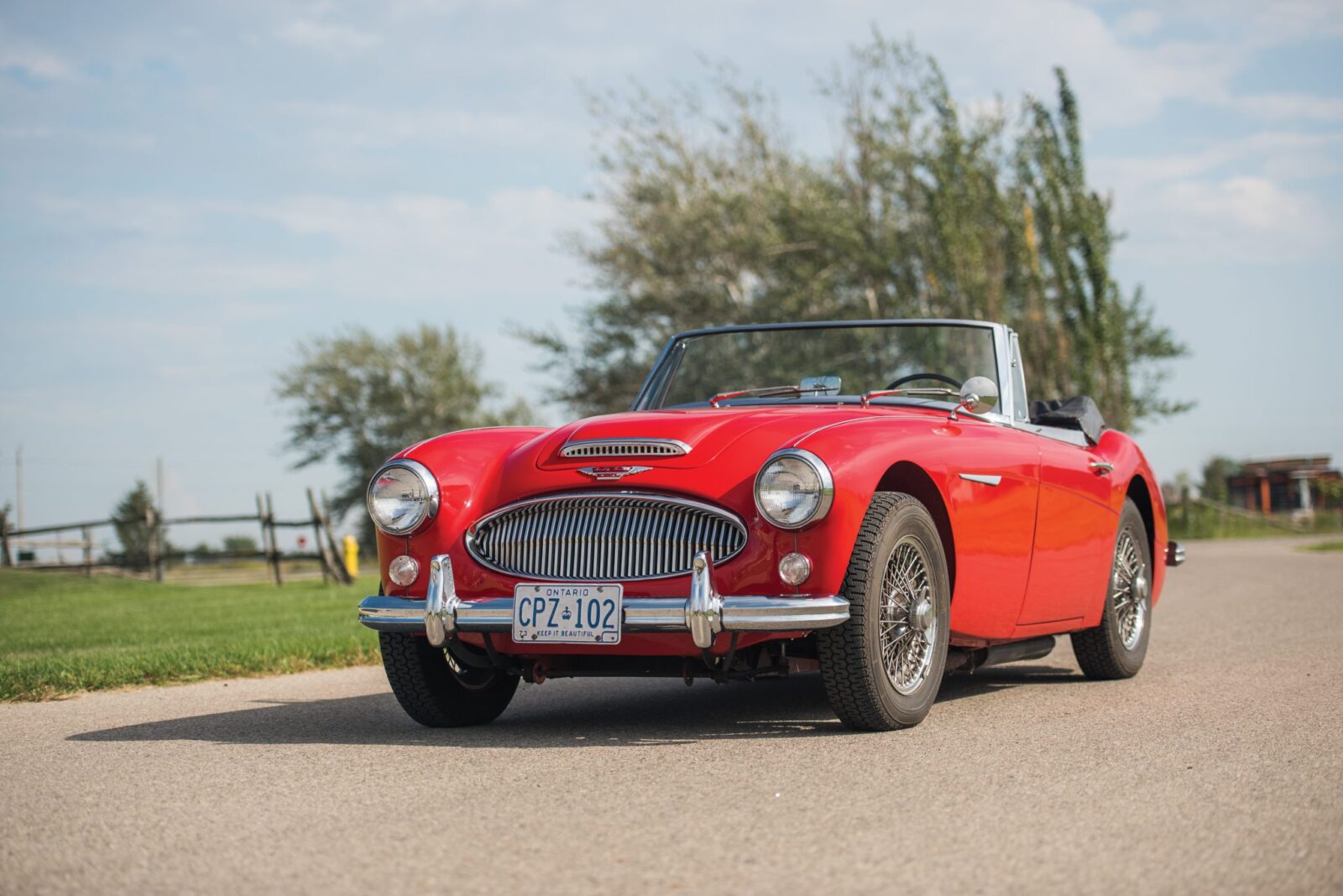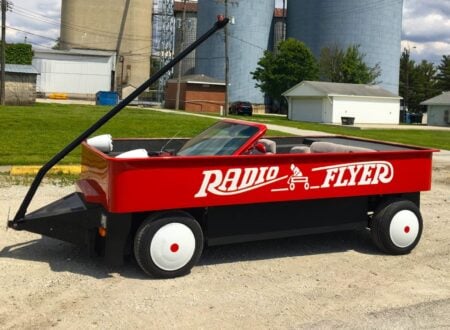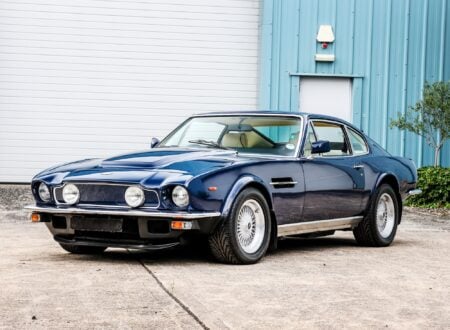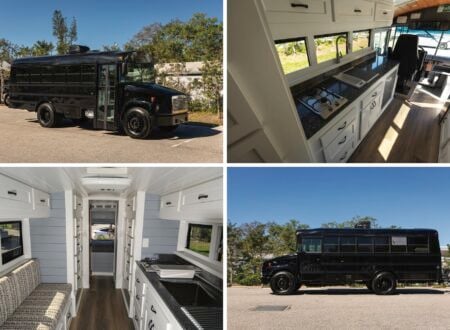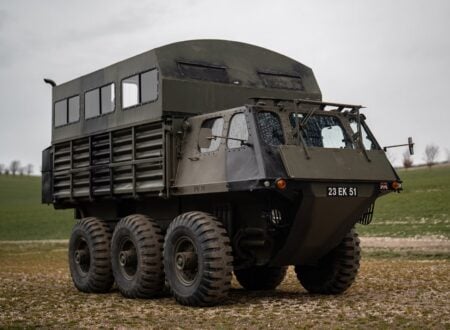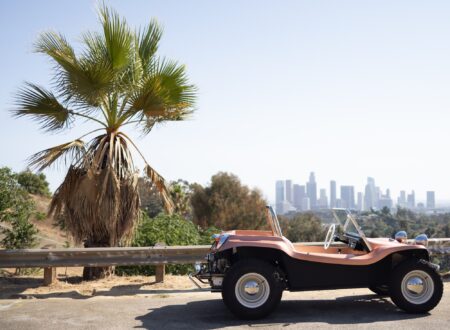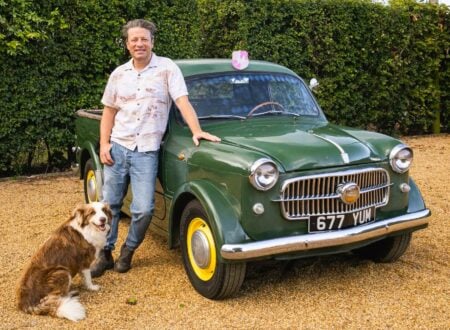Introduction
Of all the British sports cars ever made the Austin-Healey 3000 series are amongst the most iconic and most desirable, despite the fact that they were by no means the most expensive nor even the most sophisticated.
Originally created to provide an affordable sports car so that enthusiasts of modest means could participate in motor sport and club competition the “big Healey” became a common sight on race tracks, in rally competition, and in club hill climbs and gymkhanas. The engineering of the big Healeys was kept conventional, the 3000 series having a big under-stressed 3 litre OHV six cylinder engine mated to an equally conventional four speed manual gearbox optionally with an electric Laycock de Normanville overdrive. But the attractiveness of the Austin-Healey 3000 lays in a masterful combining of a stunningly beautiful body design, with no nonsense mechanics that allowed an owner of modest skill to fix, tweak and modify to their heart’s content. All of that with the added bonus of the driving experience.
If you love to drive then a big Healey provides an amazingly addictive driving experience; the sound, the feel, the sheer exhilaration melds together and just makes you want to drive the car more and more. This is a car for the enthusiast, for the romantic, for the adventurous. It was in a big Austin-Healey that French artist Sacha Distel chauffeured Brigitte Bardot around, perhaps even on her visits to Pablo Picasso.
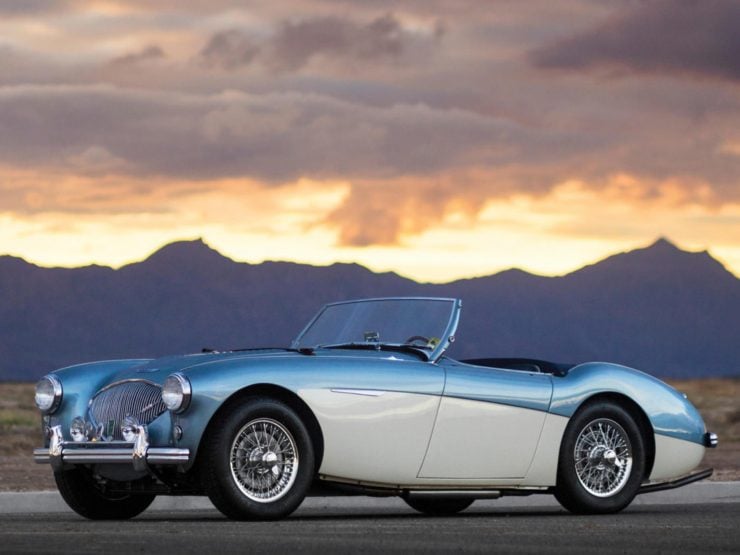
Above Image: Austin-Healey 100/4
History
The Austin-Healey 3000 began life back in 1951-1952 as a design by Donald Healey working with Barry Bilbie who created the utilitarian chassis and Gerry Coker who created the imagination catching body style. The ancestor of the Austin-Healey 3000 was called the Healey 100 – the “100” meant that this was a car capable of 100mph. But the Healey 100 was by no means the beginning of the story for Donald Healey. Donald Healey had founded his Donald Healey Motor Company immediately after the end of the Second World War in 1945. He set up his base in an old aircraft components manufacturing factory called “The Cape” in Warwick, Britain.
Donald Healey’s dream was to make expensive high performance cars and he set out to accomplish that in a Britain where the population were still on wartime ration books and raw materials were similarly rationed. To get raw materials for your expensive sports cars you needed to be planning to export those cars to bring back to Britain foreign exchange to help Britain repay her war debts. In the mid-late forties Donald Healey’s factory was turning out a number of cars including the Sportsmobile, the Silverstone roadsters, and the Elliot saloon. But in order to be able to export in quantity Donald Healey needed to build cars that were attractive on the US market. To this end he created the Nash Healey and these were built with American Nash engines and gearboxes. This was partially successful but the process taught Donald Healey that what he really needed to make his business flourish was an affordable sports car that could be mass produced. He decided to build a sports car based on the mechanics of the car that British car maker Austin were trying to export to the United States, the Austin A90 Atlantic.
This new car was called the Healey 100 and Donald Healey Motors exhibited it at the 1952 London Motor Show at Earls Court. Donald Healey hoped that his new sports car would be successful but he did not anticipate the extraordinary interest shown in the car. Orders came in thick and fast to the extent that Donald Healey realised that his modest factory would not be able to build cars fast enough to fill them. Even as he was faced with this dilemma Donald Healey’s motor show stand welcomed an unexpected visitor in the person of Leonard Lord, the managing director of Austin Motor Company. The two went out to dinner together to discuss a business proposition of mutual interest. For Leonard Lord’s Austin Motor Company their great white hope for the US export market, the Austin A90 Atlantic, had turned out to be a great white elephant, sales were dismal. On the other hand the Healey 100, based on the Austin A90 Atlantic was getting orders hand over fist. Over dinner an agreement was reached and Donald Healey went on to sign a twenty year contract with Austin Motor Company to build his Healey 100 as the Austin-Healey 100. The big Austin-Healey was born and it would continue in production in various forms until the Austin-Healey 3000 Mk III in 1967.
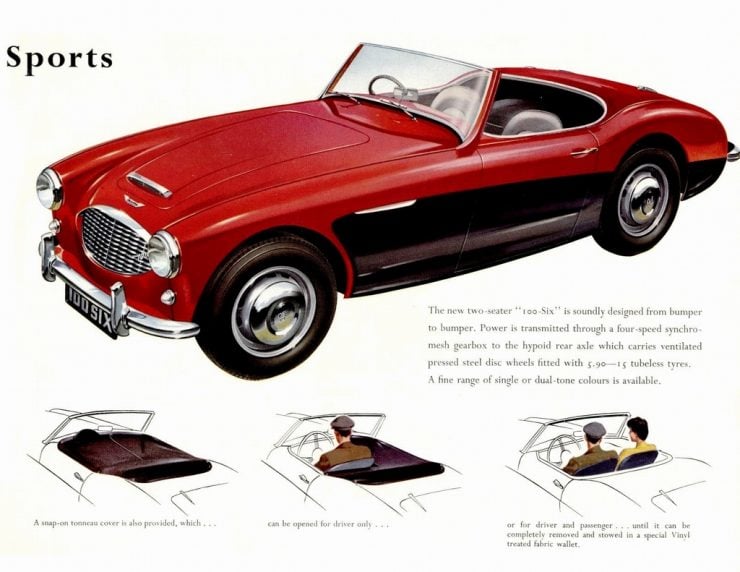
Above Image: Austin Healey 100/6
Models and Specifications
Austin-Healey 100-6 – the Development Phase
The last version of the Austin-Healey 100 series was the Austin-Healey 100-6; this car had its original Austin A90 Atlantic 2,660cc in-line OHV four cylinder engine replaced with a slightly smaller 2,639cc Austin C-Series in-line six cylinder OHV engine. The decision to use the Austin C-Series engine did not provide a significant increase in engine power. The original A90 sourced in-line four produced 90bhp in early models and the later accessory 100M Le Mans Engine Modification Kit boosted that to 100bhp. The later Austin-Healey 100S version of that engine put out an even more respectable 132bhp @ 4700rpm. By comparison the Austin C-Series OHV six cylinder developed 102bhp when first introduced, which was not much more than either the standard four or the tuned up ones. The power increase occurred later when a re-designed cylinder head and manifold pushed power up to 117bhp for the six cylinder engine. The advantage of the change to the six cylinder engine was that it provided the potential to provide a significant power increase by increasing its capacity, and it was a smoother engine better suited to a refined sports touring car than the four, which was more of a raw sports roadster. The change from the four cylinder to the six cylinder marked the beginning of the change of the character of the Austin-Healey from sports car to sports touring car. This was done to create the Austin-Healey 3000.
The Austin-Healey 100-6 was a re-styling of the original Austin-Healey 100. The bonnet (hood) was given a raised air intake to enable it to clear the longer six cylinder engine, and the front grille was a completely new design. The car was initially offered as a 2+2 (the BN4 model made 1956-1959) and then later optionally as a two seater (the BN6 model made in 1958-9). A subtle change was the elimination of the fold down windscreen of the original Austin-Healey 100. With its restyled body and the new six cylinder engine the 100-6 was almost an Austin-Healey 3000. All that was needed to create the 3000 was to increase the engine capacity, and that was done in 1959.
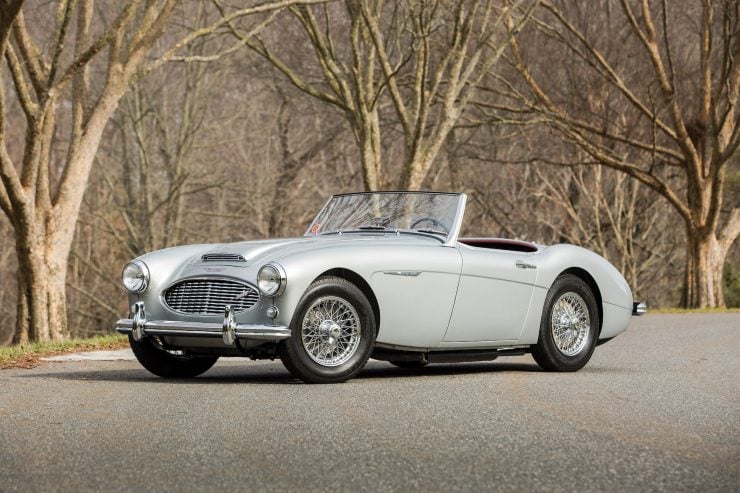
Above Image: Austin Healey 3000 MkI
Austin-Healey 3000 MkI
As introduced in 1959 the Austin-Healey 3000 was a 100-6 with its engine capacity increased to 2,912cc (177.7 cu. in.) and with the front drum brakes replaced with Girling discs for much improved performance. The power of the increased capacity Austin C-Series engine was significantly higher at 124bhp with 67lb/ft of torque. This car was produced in two models; the BN7 with 2+2 seating and the BT7 with two seats only. The car was still a mostly unchanged Austin-Healey; steering was by cam-and-peg, front suspension was independent with coil springs at the front and a live rear axle with Panhard rod and seven leaf springs at the rear. Two differential ratios were used; 3.545:1 for four-speed cars, and 3.909:1 for cars fitted with the optional Laycock de Normanville electric overdrive. As with the previous Austin-Healey 100-4 and 100-6 models the gearbox had a side change necessitating an angled gear-lever for right hand drive cars.
This first version of the Austin-Healey 3000 was made from March 1959 until May 1961 in two versions, a standard two seater designated BN7 and a 2+2 designated BT7. The 2+2 version’s rear seats were a tight squeeze, so tight that Motor magazine at the time said that they “will accommodate two small children or one adult (sitting slightly sideways) without too much complaint on short trips during a rail strike.” Suffice to say that the 2+2 was not a car in which to transport four adults on a trans-continental journey.
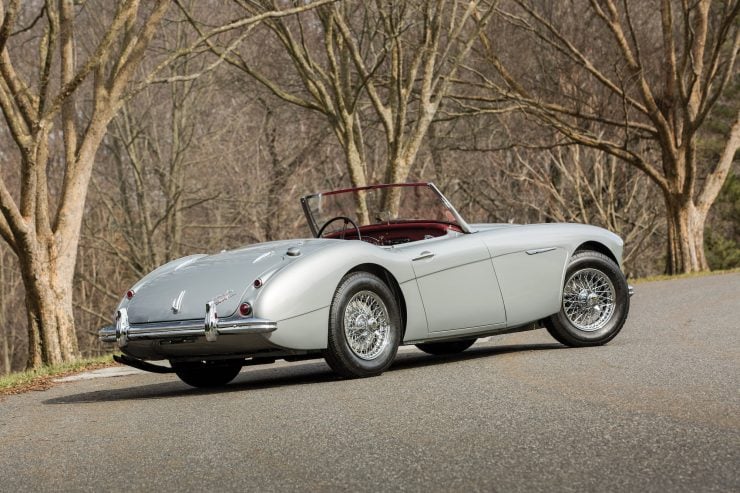
Above Image: Austin Healey 3000 MkI
Austin-Healey 3000 Mk II
In April 1961 the first model of the Austin-Healey 3000 was updated and designated the Austin-Healey 3000 Mk. II designated the BN7. This change was precipitated by declining sales of the 3000 on the all important US market. It was thought that increasing the engine power was what was needed and so that was the strategy employed. The engine power was increased to 132bhp and to accomplish that the engine was fitted with triple SU HS4 carburettors in place of the twin carburettors that had been used on previous models. The fitting of the triple carburettors made tuning much more difficult both to manage and maintain and owners who tuned their own cars needed to come up with the skills and strategies to balance the triple carburettor set up. One method was to mount triple vacuum gauges in the engine bay, one for each carburettor, which was quite effective. Alternatively there were owners who mounted their triple vacuum gauges on or under the dashboard and who used a mirror when tuning under the bonnet so they could see them. This design feature of the Mk. II is interesting in that it may have been an effort by the manufacturer to appeal to customers who preferred the old four cylinder Healeys to the new ones. The four cylinder cars were said to handle better with less propensity to under-steer than the six cylinder cars with the longer engine putting more weight forward. The triple carburettors also looked impressive bolted onto the engine, a little reminiscent of the then new Jaguar XKE “E-type”.
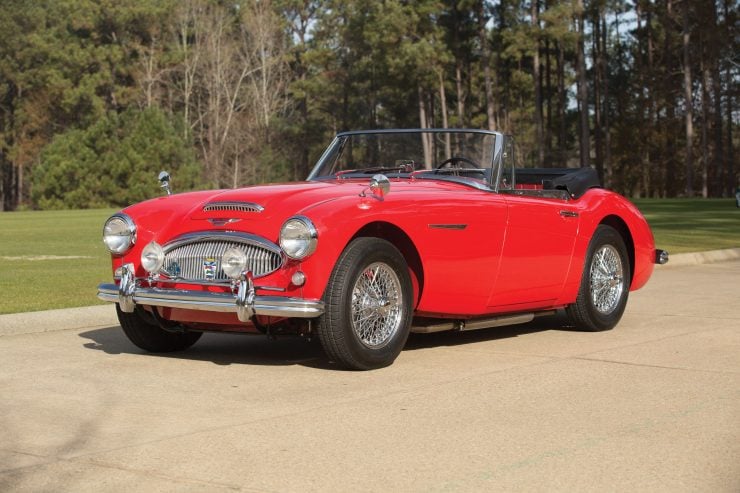
Above Image: Austin Healey 3000 MkII
The mechanics at the Austin dealerships did not like the triple carburettor set up and owners similarly mostly were not keen – except perhaps the dedicated few who had discovered the triple vacuum gauge trick. As a result sales of the BN7 amounted to just 355 cars which makes them some of the rarest (and therefore most valuable) of all the Austin-Healeys. The decision was taken to replace the triple SU HS4 carburettors with slightly larger twin SU HS6 carburettors in June 1962; this model is referred to as the Mk. IIa and was given the model designation BJ7. The engine power was almost unaffected being down to 131bhp instead of 132bhp. Interestingly when the performance of the car was tested it was discovered that the new model was six seconds quicker to 100mph and one second faster for standing to 60mph.
The dealerships and owners were happy again and management learned that the majority of Austin-Healey buyers were not the car club performance enthusiasts of the past but people who were looking for an affordable yet stylish performance car. This would pave the way for the creation of the most luxurious of the Big Healeys, the 3000 Mk. III and that creation began with the Mk. IIa BJ7 which was a substantially re-designed car. The front grille was changed to having simple vertical bars and the car was given wind-up windows, a first on a Big Healey. To go with the wind-up windows the car’s windscreen was a completely new design and included quarter vents whilst the doors had chrome extensions on the top to accommodate the new side windows. Not content with those improvements the original 48 spoke wire wheels were upgraded to 60 spoke wheels. British Motor Corporation were serious about regaining their lost share of the US market. The BJ7 was only made as a two seater.
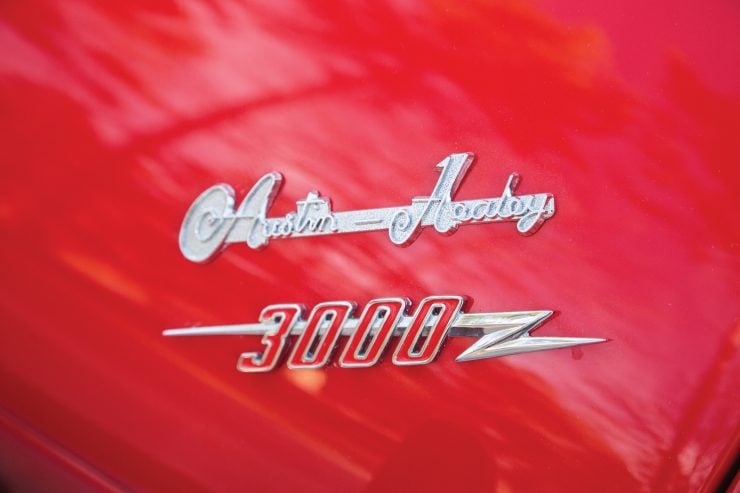
Above Image: Austin Healey 3000 MkII Badge
Austin-Healey 3000 Mk III
The Austin-Healey 3000 Mk. III was the final and most luxurious iteration of the Big Healey. The primitive interior of the original Healeys was replaced with one with a full wood dashboard that had a tunnel console that extended down to the gear-lever. The instrumentation was new with Smith’s black instruments with white numbers and chrome bezels. The car had full door trims and wind-up windows with a neat chrome extension on the top of the doors to contain and seal them as pioneered on the BJ7. The seats were now upholstered in “Ambla” vinyl but leather was available as an extra cost option. Wire wheels were made standard on all US market cars as was servo assistance on the brakes which had previously been optional. This car, designated the BJ8 was a 2+2 and had the rear seats hinged so they could be folded down to provide additional luggage space. The 3000 Mk. III was no longer a stripped down roadster, it was a sports touring car more in the style of the Jaguar XK120, 140, 150. This was a car that was created as a luxury sports car rather than as an affordable sports car that could be raced at the track and then driven home afterwards, it was no longer the sort of car that Donald Healey had originally conceived. But, that being said, the Mk. III is the most sought after of all the Big Healeys and with good reason.
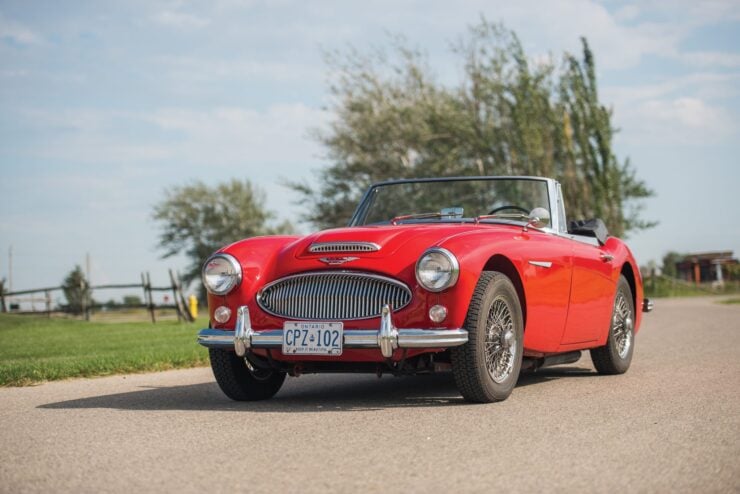
Above Image: Austin Healey 3000 MkIII
In production from November 1963 until December 1967 the Mk. III’s engine power was increased to a healthy 148bhp @ 5,250rpm with 173lb/ft of torque at 3,000rpm. To achieve the increase in power the engine was fitted with twin SU HD8 carburettors along with other engine tweaks. Top speed was 121mph and the standing to 60mph was one second quicker than the Mk. II at 10 seconds despite the bodywork and trim of the car having added weight.
The Mk III was improved in May 1964 to address owner complaints about the very low slung exhaust. The chassis rear frame rails were modified to enable an increase in ground clearance whilst softer six leaf springs were used in place of the original seven leaf system. The original Panhard rod of the earlier cars was replaced with radius arms. These are the Phase II Mk. III cars and they have noticeably higher rear ground clearance.
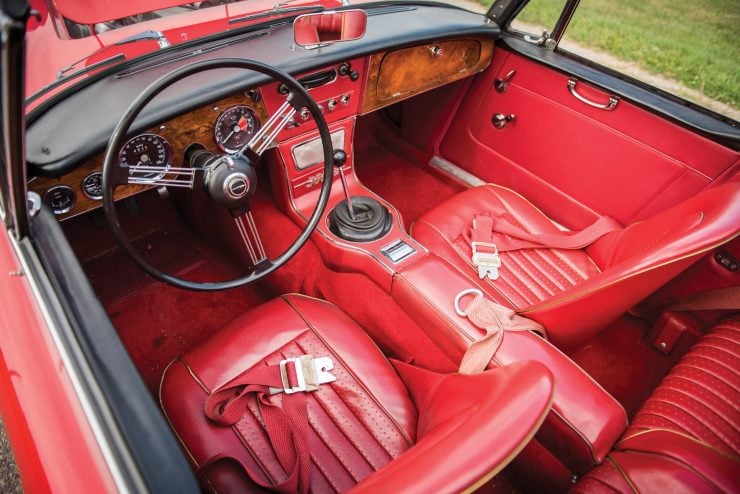
Above Image: Austin Healey 3000 MkIII Interior
Buying an Austin-Healey 3000
If considering buying an Austin-Healey 3000 there are a couple of basics to keep etched in your mind. The first is that the value of these cars has been escalating exponentially and that this means there are some people out there who have an old Healey that they want to make some big money on. Where there’s nice money to be made people may be tempted to be a tad less honest than might be otherwise. Related to this is that you need to remember you are planning to buy a car that is five or six decades old, and it’s a car that the factory did not see fit to rustproof when they were making them. The early cars were made in post World War II Britain when materials were scarce, and by the sixties the British Motor Corporation was financially struggling and consequently cutting costs on things such as rust-proofing.
Because the value of these cars has gone up enormously a buyer really needs to do their homework before kicking tyres and opening their wallet. It is strongly recommended that you get hold of Reid Trummel’s book “The Essential Buyer’s Guide: Austin-Healey Big Healeys”. And study it before you go and look at anything. It is also recommended that you become a part of an Austin-Healey club so you have access to people who love these cars and who know them inside and out. You are pretty certain to find expert help both in making your purchase and in keeping it in fine shape for the future.
The Austin-Healey was designed with a chassis and bodywork but the floorpan and bulkhead are welded onto the chassis creating a structure that is semi-monocoque as these welded on body sections are stressed members.
The following are the main points to pay high priority attention to:
– Check the A and B posts for rust especially where they join the chassis. Use a magnet and small ice pick to check for use of body filler.
– Look for signs of chassis repair or damage, check chassis alignment (workshop manuals have chassis alignment information). Ensure you check the chassis outriggers also as these are prime candidates for rust damage as they trap moisture and dirt.
– Floorpans, sills, wings and wheel arches are all high risk rust areas. The inner sills are especially difficult to repair. Repairs that require removal of welded on body parts are going to require that those parts be cut off, repaired or replaced, and welded back on again. Work such as that is going to be expensive unless you are the one doing it and you have the skill set and equipment for it.
– Unscrew the sill covers and peel back the carpets to make a good examination of that area.
– Once you’ve done a thorough examination of the chassis both inside the car and under it move on to examining the body. One area that is an indicator of past damage and/or faulty past repair is the swage line that runs from the front wheel arch to the rear of the car. Any imperfections visible indicate problems underneath most likely involving filler under the paintwork.
– Check the swage line as it meets the doors, it should be spot on.
– Check the opening and closing of the doors, and check the door gaps are even top to bottom.
– Jack the car up at the rear and open and close the doors. If the chassis is weak it will show up in the door operation.
– Check the inside of the bonnet and boot lids to see if there is any signs of past dents that have been filled in on the outside.
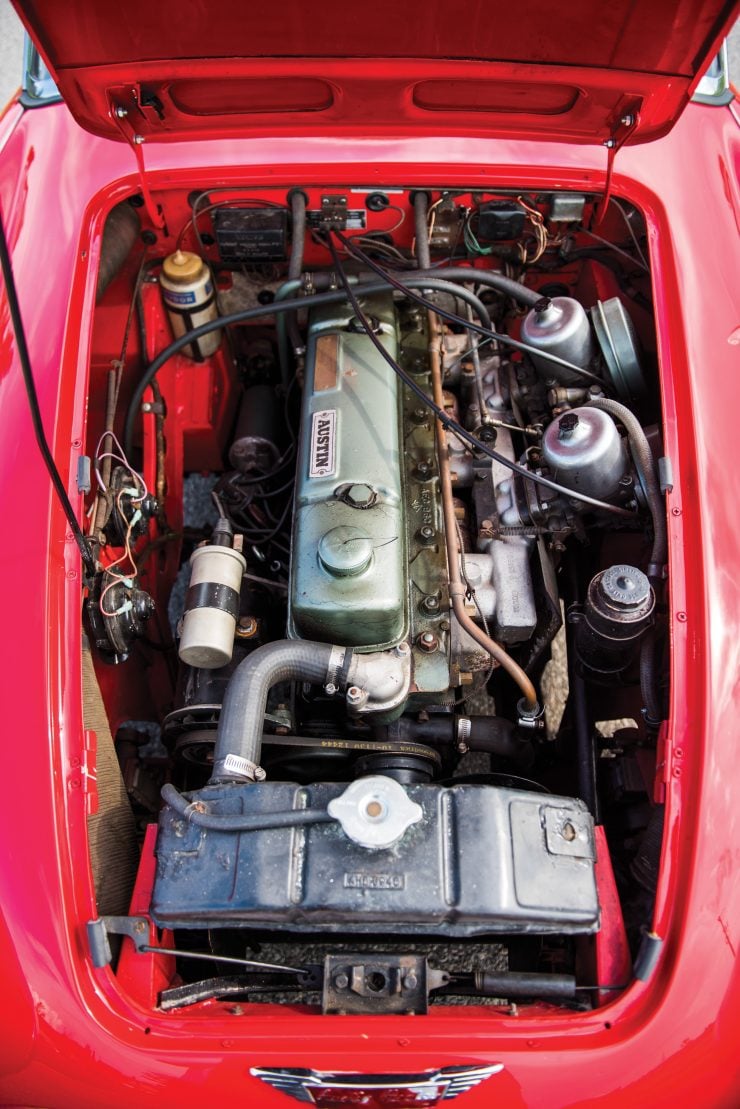
Above Image: Austin Healey 3000 MkIII Engine
The bodywork is by far the most important area to examine. New replacement chassis are available for the six cylinder cars so a from the ground up restoration can be done but there is considerable expertise needed to get the panels and doors installed properly not to mention re-assembly of the suspension etc.
Mechanically the Austin-Healey 3000 is a conventional and readily fixable automobile. The usual mechanical checks on the engine will include the following:
– Check for oil leaks
– Check the radiator coolant for milky discolouration caused by oil leaking into the coolant.
– Check cylinder compression/leakage
– Check for noises of the unwanted kind.
Drive the car and listen for all the usual noises such as wheel bearing growl, transmission knocks and whines, suspicious sounds from the engine. In any British car and especially a British sports car check how second gear engages as it is the most common one to fail. Shift into second as you prepare to take a corner and see if you hear sounds that indicate the synchromesh is worn or worn out and make sure it doesn’t show a tendency to jump out of gear. Check the brakes. Check for steering play.
The mechanics of the Austin-Healey 3000 are fixable and so if you find a car with proven sound chassis and bodywork but there seem to be engine or transmission problems you have a car that you can expect to fix at reasonable and predictable cost, and you can expect to have quite a bit of fun doing it.
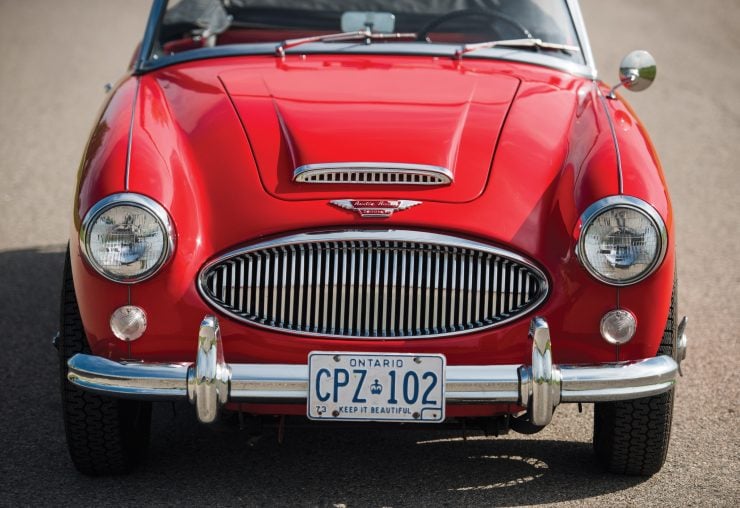
Above Image: Austin Healey 3000 MkIII Front
Conclusion
The Austin-Healey 3000 and its close sibling the 100-6 are some of the nicest sports cars to emerge from Britain in the mid part of the 20th century. They may not have been described as the most beautiful car ever made like the E-type was, yet a lot of us think that they are. They are not the fastest sports car you could buy, but if you like Austin-Healeys, who cares? They’re stunningly beautiful, mechanically easy to work on, and utterly delightful to drive despite the fact that they don’t have synchromesh on first gear (You do know how to double de-clutch don’t you?) I don’t think that there is any other car I would be happier to have sitting in my garage.
If you are blessed with enough cash to buy yourself one of these classic beauties be careful that the beauty you intend to open your wallet for is not one whose beauty is skin deep. Make sure she is rust free and straight, enjoy getting her mechanicals and suspension into the best possible shape, and enjoy the privilege of owning and driving one of the best British sports cars ever created.
Editor’s Note: If you have tips, suggestions, or hard earned experience that you’d like to add to this buying guide please shoot us an email. We’re always looking to add to our guides, and your advice could be very helpful to other enthusiasts, allowing them to make a better decision.
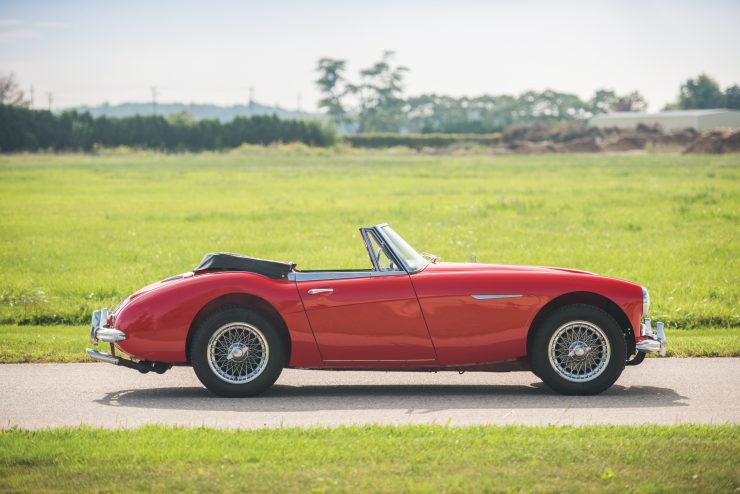
Above Image: Austin Healey 3000 MkIII Side
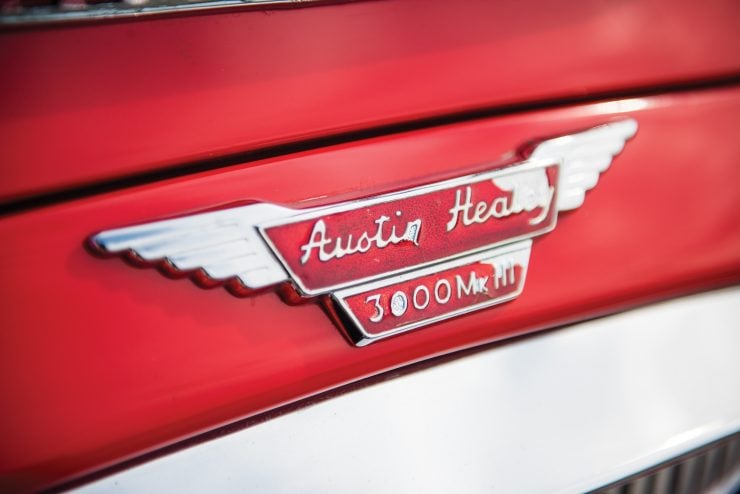
Above Image: Austin Healey 3000 MkIII Badge
———-
Article written by Jon Branch for Silodrome
Image Credits:
Austin Healey MkI – Motorcar Studios ©2016 Courtesy of RM Sotheby’s
Austin Healey MkII – Travis Massey ©2015 Courtesy of RM Sotheby’s
Austin Healey MkIII – ©2016 Courtesy of RM Sotheby’s

